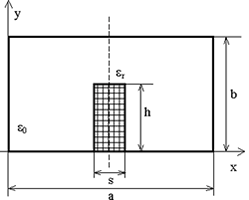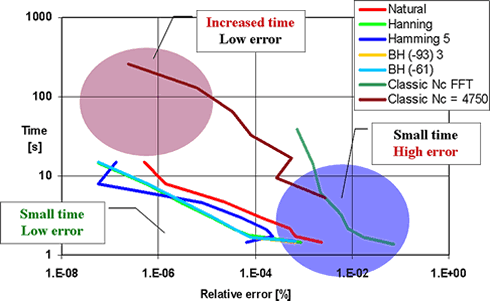|
Interactive TLM program
You can use this page to launch a TLM electromagnetic program. The analyzed structure is shown bellow:

There are some restrictions regarding this structure: s = 2 Dl, a = 20 Dl, b
= 10 Dl, h = 7 Dl, er
= 3, x,y = 0..11. Excitation is applied on a line (x=1) and the output point can be changed.
You can change some of the parameters:
The "Classical" method is the translation in C++ of the W.J.R. Hoefer's Pascal program found in: "Tatsuo Itoh - Numerical Techniques for Microwave and Millimeter Wave Passive Structures".
The "New" method uses FFT and a new spectral estimation method for faster computations
The graph on the next page shows the superiority of the new method. In the space relative error/computation time, the new method occupies the best place, characterized by small computation time and low relative error (note logarithmic scales). The classical method has either a higher computation time, or a higher error level. All the analyzed windows are superiors to the classical method, offering, in the same time, an error smaller by a factor up to 104, or, at comparable error level, 20 times faster computation. FFT computes always N spectrum samples so multiples spectral peaks can be detected in almost the same time.
The improved spectral estimation has been applied with the TLM method, but can easily be adapted to all other microwave numerical recipes, being well adapted to the sharp frequency peaks applications.

| 
